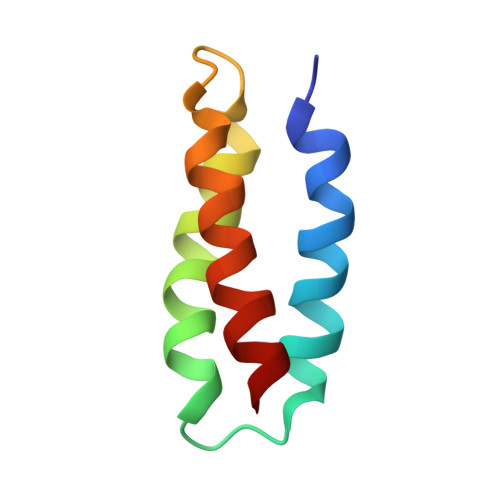Structure of a De Novo Designed Protein Model of Radical Enzymes
Dai, Q.-H., Tommos, C., Fuentes, E.J., Blomberg, M., Dutton, P.L., Wand, A.J.(2002) J Am Chem Soc 124: 10952-10953
- PubMed: 12224922
- DOI: https://doi.org/10.1021/ja0264201
- Primary Citation of Related Structures:
1LQ7 - PubMed Abstract:
The use of side chains as catalytic cofactors for protein mediated redox chemistry raises significant mechanistic issues as to how these amino acids are activated toward radical chemistry in a controlled manner. De novo protein design has been used to examine the structural basis for the creation and maintenance of a tryptophanyl radical in a three-helix bundle protein maquette. Here we report the detailed structural analysis of the protein by multidimensional NMR methods. An interesting feature of the structure is an apparent pi-cation interaction involving the sole tryptophan and a lysine side chain. Hybrid density functional calculations support the notion that this interaction raises the reduction potential of the W degrees /WH redox pair and helps explain the redox characteristics of the protein. This model protein system therefore provides a powerful model for exploring the structural basis for controlled radical chemistry in protein.
- The Johnson Research Foundation and Department of Biochemistry and Biophysics, University of Pennsylvania, Philadelphia, Pennsylvania 19104-6059, USA.
Organizational Affiliation:
















